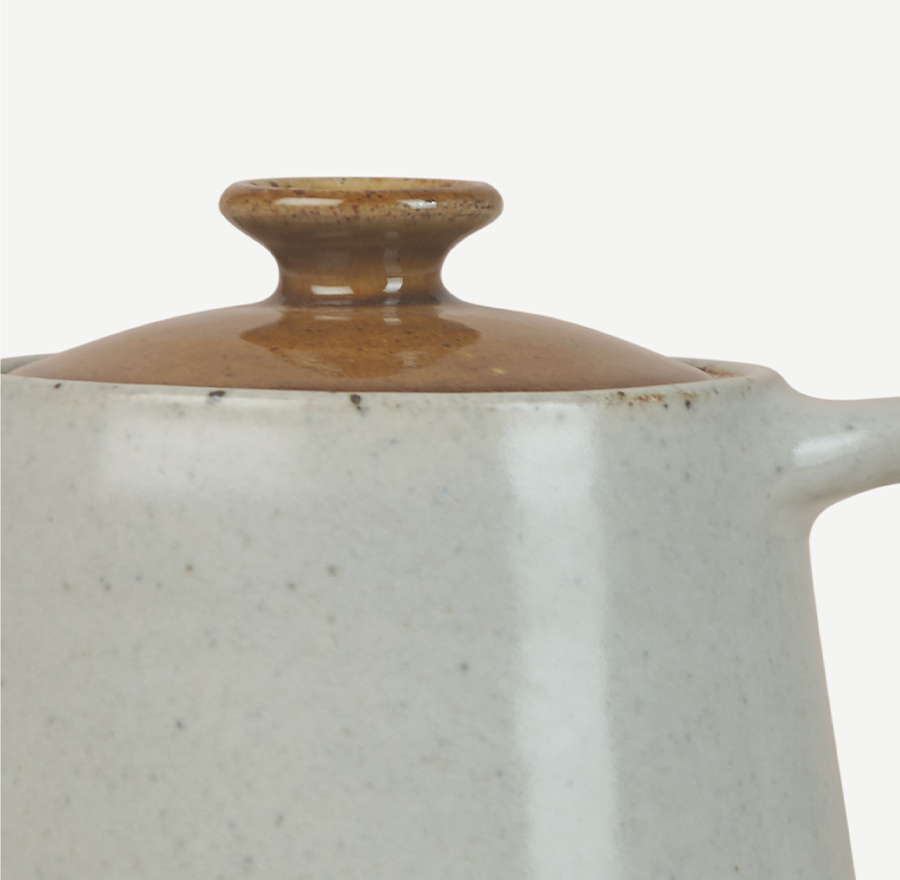RHINO PLATE
A tastefully designed plate to highlight your best culinary creations
A tastefully designed plate to highlight your best culinary creations
Craft Type: Ceramic
Simple and timeless, this handcrafted ceramic plate with a gorgeous glazed surface is fit for all occasions — special or ordinary. The elegant design and colour tone allows the plate to fit into both modern and traditional tablescapes, and will allow your best culinary creations to do all the talking. This ceramic plate is handcrafted in Uttar Pradesh, and is a part of Ikai Asai’s studio pottery collection of clayware, made by potters in studios across India.
This product is handcrafted and slight variations in colours, textures and forms are to be expected.
Made in: Uttar Pradesh
Material: Stoneware
Dimensions (cm): 26.7(L) x 26.7(B) x 3.1(H); Dia: 26.7
Dimensions (inches): 10.5(L) x 10.5(B) x 1.2(H); Dia: 10.5
Weight: 855 grams
No. of pieces in a set: 1, One Plate
Clay, a natural material, is used to make ceramic wares. It is kneaded and then thrown on a pottery wheel, where it is shaped by hand into this product. The clay product then goes through the process of bisque firing, glaze application, drying, and then glaze firing to make the final ceramic product. Pottery in the Indian subcontinent has a long history — it has existed as a craft form for centuries. Evidence of earthenware has been found in the early settlements of Lahuradewa and later during the Indus Valley Civilization. Recent times have seen pottery taking on modern design sensibilities, aided by artists and potters that are breathing new life into the craft form. Studio pottery in India is said to have been started by Rabindranath Tagore in Shantiniketan, West Bengal. It further branched out into two styles, which developed in Delhi under Gurcharan Singh and in Pondicherry under Ray Meeker’s Golden Bridge Pottery.
- Wash by hand only, using a mild dishwashing soap. Dry using a soft towel or tissue. Avoid stacking ceramic dishes in the sink.
- This ceramic product is microwave-safe.
- While stacking for storage, consider using tissue in between ceramic dishes.
- Description
- Process & Craft
- Care
Craft Type: Ceramic
Simple and timeless, this handcrafted ceramic plate with a gorgeous glazed surface is fit for all occasions — special or ordinary. The elegant design and colour tone allows the plate to fit into both modern and traditional tablescapes, and will allow your best culinary creations to do all the talking. This ceramic plate is handcrafted in Uttar Pradesh, and is a part of Ikai Asai’s studio pottery collection of clayware, made by potters in studios across India.
This product is handcrafted and slight variations in colours, textures and forms are to be expected.
Made in: Uttar Pradesh
Material: Stoneware
Dimensions (cm): 26.7(L) x 26.7(B) x 3.1(H); Dia: 26.7
Dimensions (inches): 10.5(L) x 10.5(B) x 1.2(H); Dia: 10.5
Weight: 855 grams
No. of pieces in a set: 1, One Plate
Clay, a natural material, is used to make ceramic wares. It is kneaded and then thrown on a pottery wheel, where it is shaped by hand into this product. The clay product then goes through the process of bisque firing, glaze application, drying, and then glaze firing to make the final ceramic product. Pottery in the Indian subcontinent has a long history — it has existed as a craft form for centuries. Evidence of earthenware has been found in the early settlements of Lahuradewa and later during the Indus Valley Civilization. Recent times have seen pottery taking on modern design sensibilities, aided by artists and potters that are breathing new life into the craft form. Studio pottery in India is said to have been started by Rabindranath Tagore in Shantiniketan, West Bengal. It further branched out into two styles, which developed in Delhi under Gurcharan Singh and in Pondicherry under Ray Meeker’s Golden Bridge Pottery.
- Wash by hand only, using a mild dishwashing soap. Dry using a soft towel or tissue. Avoid stacking ceramic dishes in the sink.
- This ceramic product is microwave-safe.
- While stacking for storage, consider using tissue in between ceramic dishes.
























